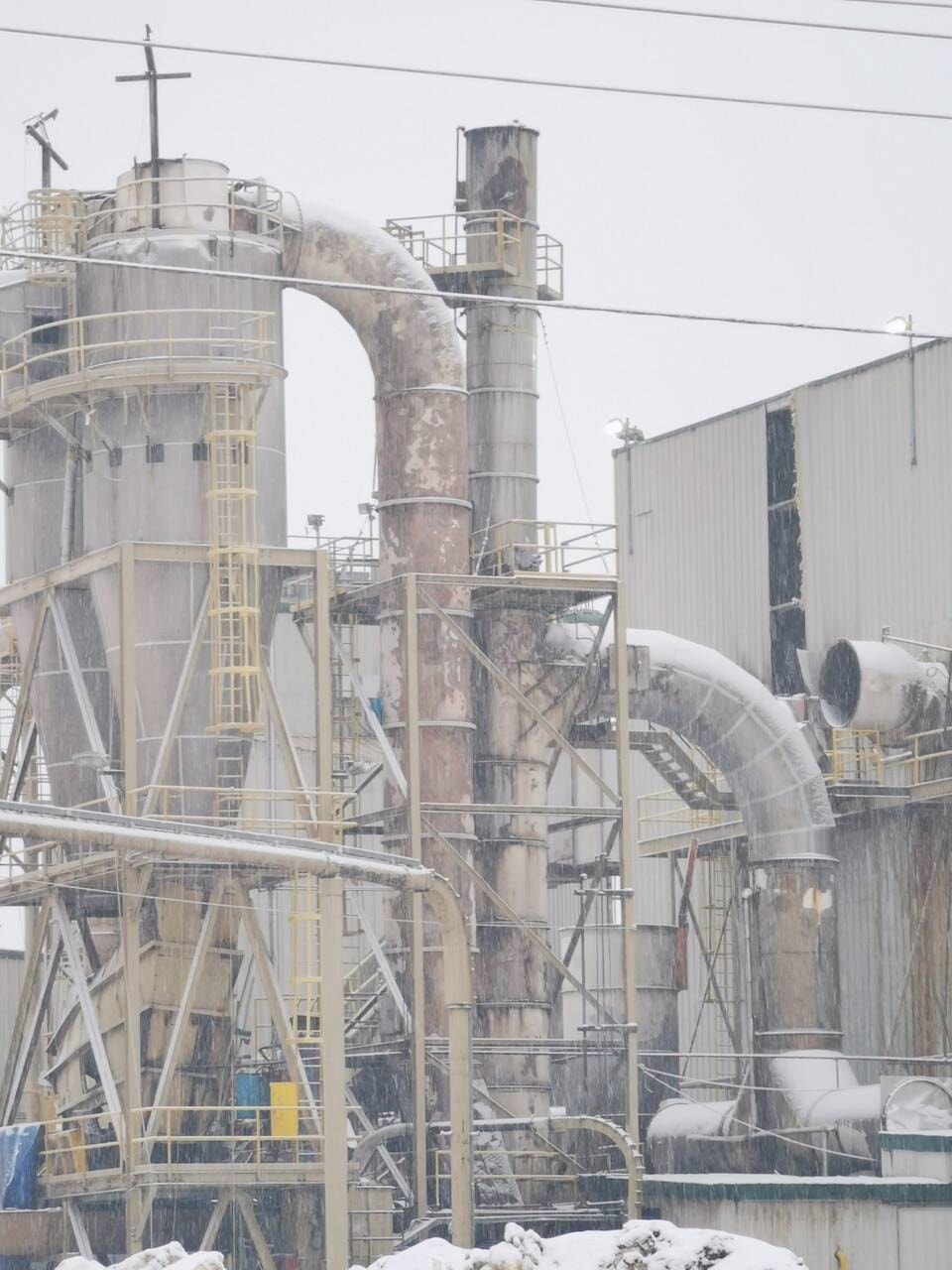A series of explosions at the Houston Pellet Plant on Nov. 25, 2020 which injured four people was triggered when a buildup of unknown combustible gas was ignited by the plant’s natural gas burner used to dry wet fibre, indicates an extensive WorkSafe BC report into the incident.
A vertical orange flame shot out of one of the plant’s stacks while a wave of flame then ignited combustible dust within the plant’s drying machinery.
The report indicated that the force of the flame erupting from the stack was sufficient to blow its steel lid of 1,278 pounds up and over an adjacent energy plant owned by the next-door Canfor sawmill, a distance of 246 feet.
The sound of the explosions, described as “booms”, could be heard within the downtown core.
Three railcar loaders and a millwright were injured.
The explosions occurred after the natural gas burner was ignited following a partial shutdown of drying operations.
That was in response to an irregular pulsating burner flame being observed instead of a steady blue flame and the stack lid lifting up as steam was being expelled from metal skirting.
Although there was supposed to be an eight-minute purge of gases prior to the burner flame being ignited, the WorkSafeBC report indicated that the purge cycle lasted just five minutes.
“Either excess fuel (natural gas, as the fuel source for the burner) was not fully purged by the automatic purge cycle, or excess natural gas was released into the burner system but not properly combusted as part of the burner restart,” WorkSafeBC said of the results of an investigation by a third-party hired by the pellet plant.
The investigation by the plant itself also found that its operating system did not provide adequate information leading up abnormal situations.
The “investigation also found that no oxygen or gas sensors were installed. Such sensors would have alerted operators to a developing explosive atmosphere in the dryer system,” the WorkSafeBC report stated.
And while the plant does have an extensive hazard analysis and risk assessment process regarding the accumulation of combustible dust, WorkSafeBC said it did not have the same process in place when dealing with abnormal or unknown conditions.
The plant “did not implement a policy or procedure to ensure a complete shutdown if signs exist that are not common or are specified in manufacturers’ recommendations,” the WorkSafeBC report said.
And it found the plant was restarted “with no assurance that the system was safe to operate.”
There was also no procedure or checklist for partial shutdowns, the agency found.
Overall, WorkSafeBC determined the plant failed in adhering to one section of the Workers Compensation Act and one of its health and safety regulations.
The section of act indicated there was a “failure to provide the information, instruction, and training necessary to ensure the safety of workers to carry out their work and to ensure the safety of other workers at the workplace.”
For its part, the plant undertook 16 specific actions in rebuilding the dryer machinery and providing more information and instruction to its workers.
That included increased automation to eliminate operator error or variance, installing software that can better report changes to operating situations, updating standard operating procedures for dryer startup and shutdown and training more workers to an increased occupational first aid standard.
There were no fines issued to the plant.
At the time of the explosions, the plant was jointly owned by Pinnacle Pellet, Canfor and the Witset First Nation and operated by Pinnacle.
Pinnacle was then bought out by the Drax Group, an English-based multinational energy producing company, in the spring of 2021.
“Since we acquired Pinnacle last year, we have implemented additional process safety protocols and partnered with experts from across the industry to develop processes to ensure a safer path forward,” the company said in a provided statement.
“The support of Pinnacle colleagues in this work has been immensely helpful to the progress which has been made.”
